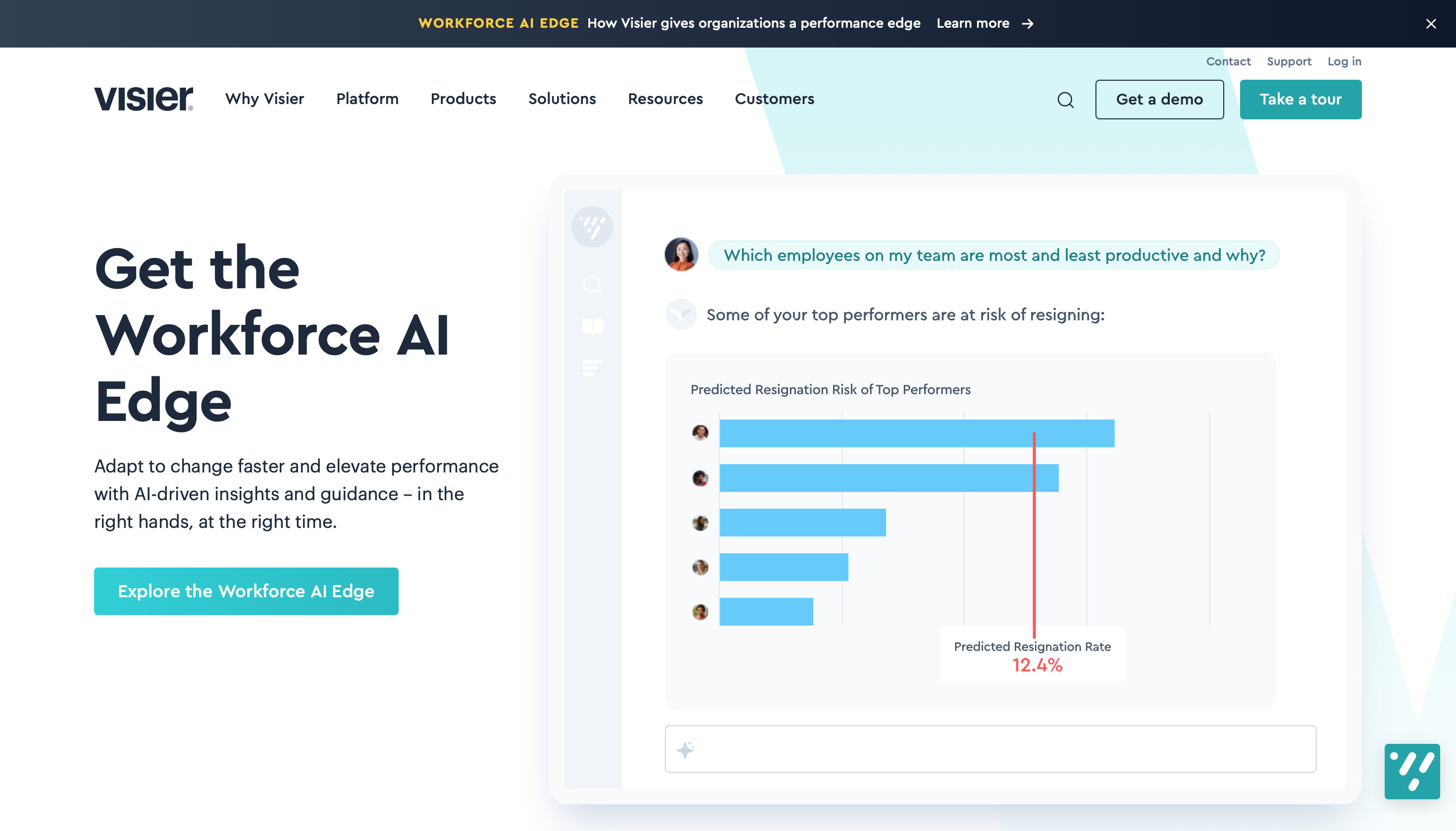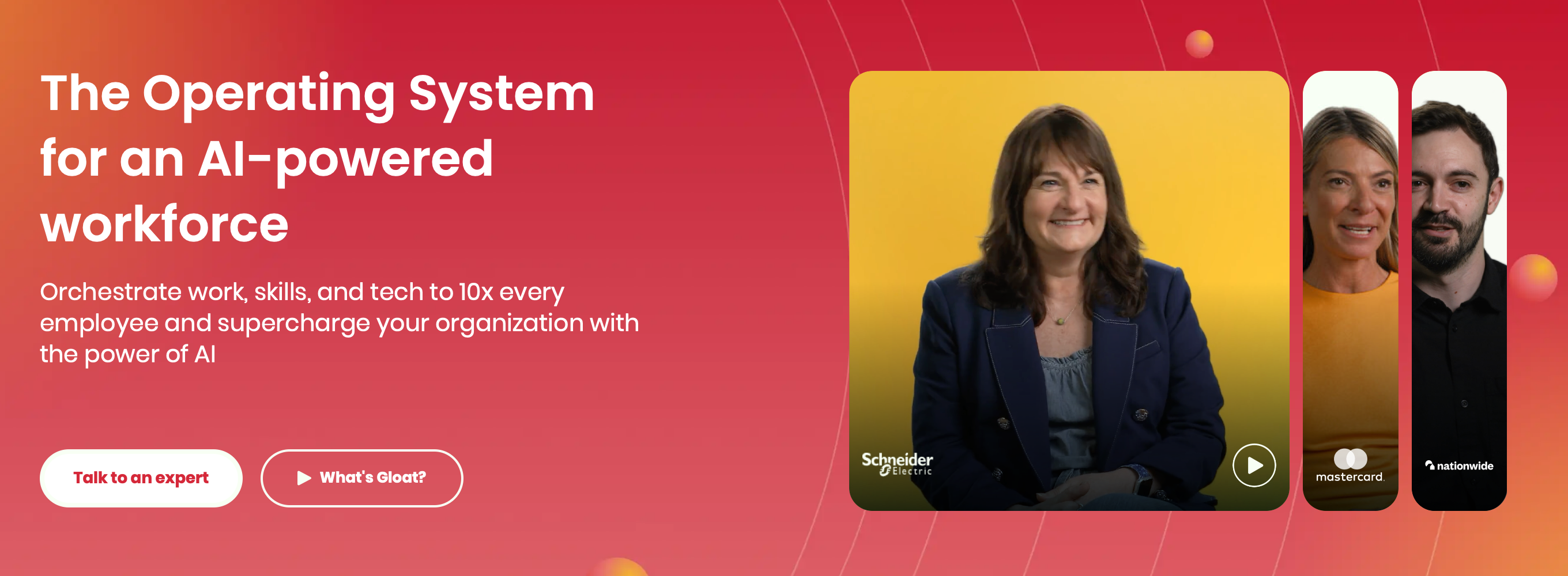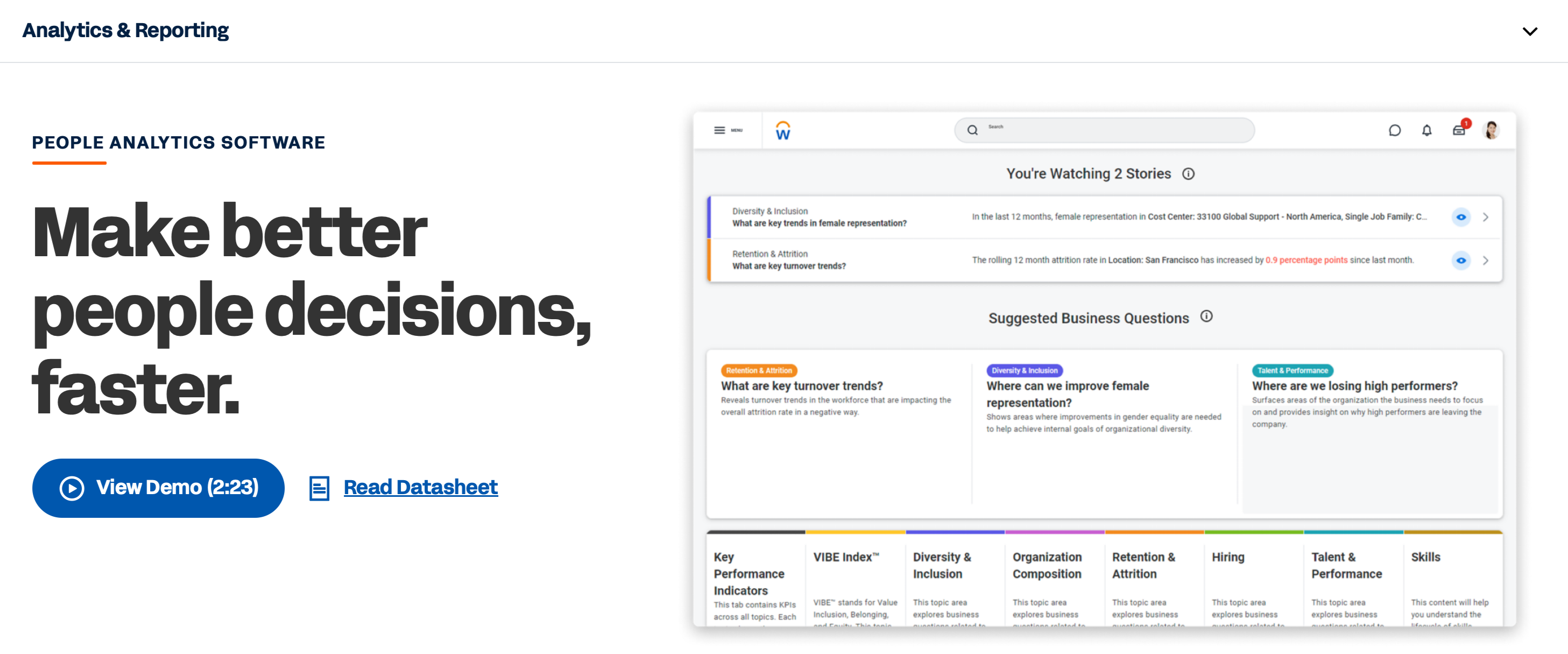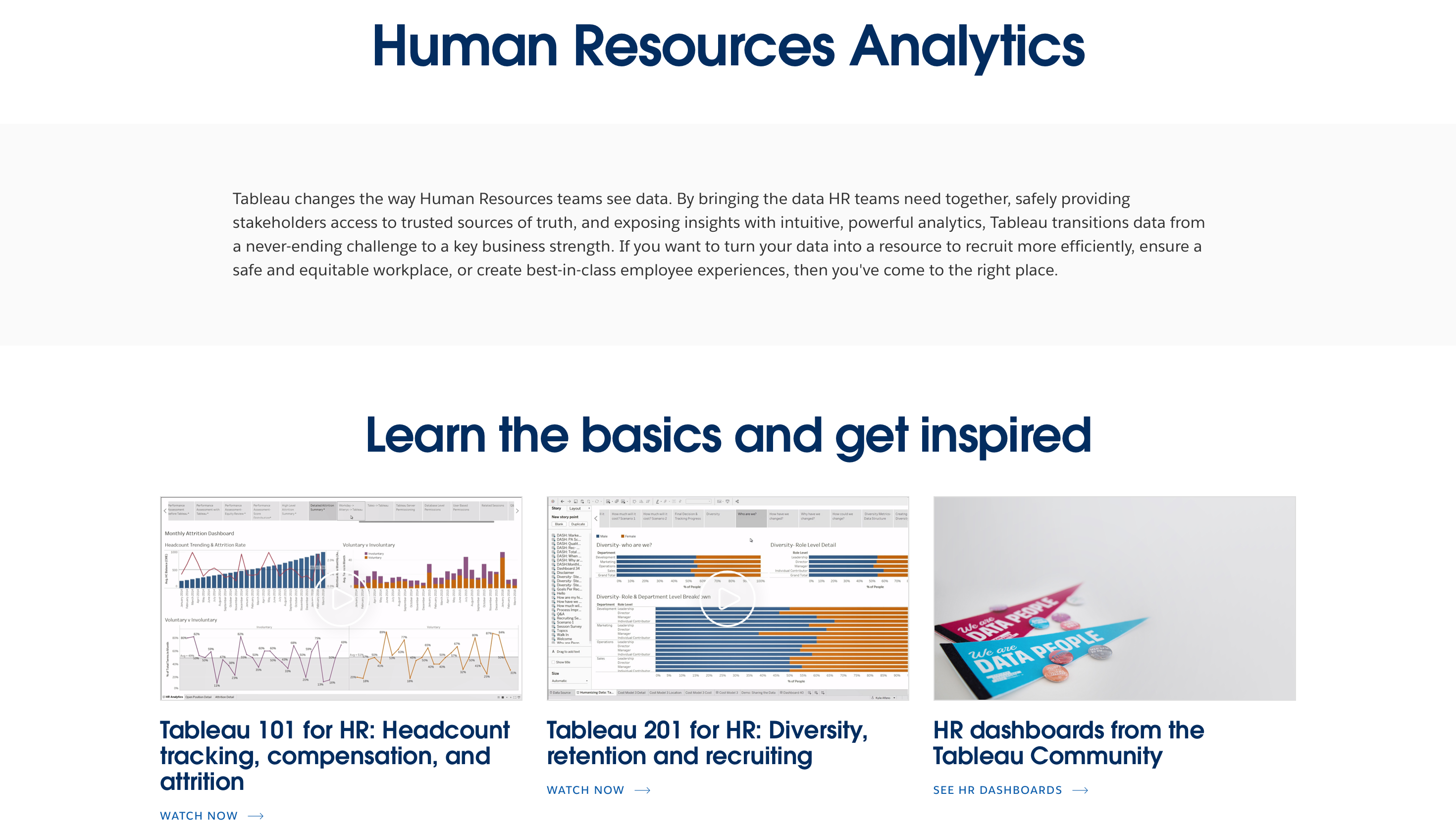If you’ve evaluated workforce analytics platforms, you’ve probably hit the same wall most leaders do: too many tools promise dashboards and too few deliver answers.
You don’t need another business intelligence (BI) layer that repackages your HRIS data into charts. You need something that tells you:
- Where your talent gaps are going to be—not where they were six months ago
- Who in your workforce is underutilized or ready for a new role
- How to reduce your external hiring dependency by moving people internally
- How to align talent development with actual business priorities
Most platforms can’t do that. They either sit too close to the HR stack (offering backward-looking metrics), or they require so much configuration that only a data team can extract insight. And when internal mobility or skills intelligence does show up, it’s usually an afterthought.
So, in this article, we’ve narrowed down seven platforms that go beyond simple reporting to help you make strategic workforce decisions. Some are built for organizational planning, some for analytics, some for activation, etc. Each one solves a different piece of the puzzle.
Fuel50: Best for skills-based talent intelligence and internal mobility at scale
Fuel50 isn’t just a talent marketplace; it’s a fully integrated talent intelligence platform designed to give enterprise organizations a dynamic, skills-based infrastructure for internal mobility, career growth, and workforce planning.
Our platform’s unique strength lies in how it blends AI-driven personalization, science-backed skills architecture, and real-time analytics to help companies unlock the full potential of their existing workforce—without relying on external hiring to fill internal gaps.
Build a dynamic skills architecture grounded in science
Fuel50’s platform is built on a proprietary skills ontology comprising more than 5,000 granular, cross-functional capabilities, from technical competencies and leadership behaviors to tools, technologies, and industry-specific knowledge areas. Unlike flat, keyword-based skills libraries, Fuel50’s ontology is structured, multi-dimensional, and constantly evolving, curated by organizational psychologists and validated against real-world role data.
The platform maps these skills to live job roles, projects, and career paths, giving organizations a scalable framework to assess capability, rather than credentials alone. What makes Fuel50’s ontology distinct is that it’s embedded within a role architecture, allowing companies to define success profiles, career bands, and progression ladders based on real competencies, not just job titles.
Fuel50 also bakes in DEIB-conscious design at the ontology level. Skills and roles are audited for biased language, exclusionary definitions, and progression blockers, making it possible to build a skills-based talent strategy that’s not only accurate but also inclusive by default.
Empower employees with personalized career pathing
Fuel50 gives every employee a transparent view of their possible futures inside the company based on their current skills, interests, and the organization’s available pathways. Instead of a static career ladder, it creates a personalized, interactive map of adjacent roles, future possibilities, and the skills needed to close the gap.
The platform’s AI-enhanced career pathing shows employees where they stand today, what their next best move could be, and how to get there. For each path, Fuel50 recommends targeted learning, stretch assignments, and mentorships, helping employees upskill in a way that’s actionable and visible. Managers also gain access to these insights, enabling richer career conversations and performance coaching.
This capability is especially impactful in flattening organizations or matrixed environments where growth is no longer solely vertical. Fuel50 supports lateral mobility, cross-functional development, and “tour of duty”-style career building to drive engagement in cultures where traditional promotional tracks no longer apply.
Facilitate internal mobility through a talent marketplace
Fuel50’s internal talent marketplace is where its skills intelligence comes to life. Employees are intelligently matched to full-time roles, short-term gigs, internal projects, mentorships, and even stretch assignments based on real-time alignment between their skills and opportunity requirements.
Unlike basic matching engines, Fuel50’s marketplace leverages skills adjacency modeling to surface opportunities that a candidate might not be an exact fit for today but could grow into with minor development. This expands the pool of internal candidates, shortens role-to-fill time, and improves succession readiness.
The marketplace also supports “gigification” of work, allowing employees to contribute outside their day jobs, build new skills, and increase visibility across teams. For organizations, this unlocks underutilized capabilities and builds internal networks of expertise, which are critical for cross-functional agility and retention.
Because Fuel50 ties every opportunity back to the ontology and role architecture, the entire system stays structured and measurable—no spreadsheets, subjective nominations, or manual processes.
Provide actionable insights with advanced analytics
Along with uncovering opportunities, Fuel50 helps organizations understand why talent moves, where capability gaps exist, and what development priorities will drive performance.
The platform offers rich analytics across five key dimensions:
- Mobility tracking: Who’s moving, where, and why
- Skills intelligence: Supply/demand analytics for critical capabilities across business units
- Workforce readiness: Pipeline strength for key roles and succession pathways
- Engagement and development: Participation in gigs, mentoring, learning, and mobility
- Opportunity flow: Where roles or projects are filling internally versus externally
These insights are live, skills based, and tied to action. Fuel50 is a strategic planning tool that shows HR and business leaders how to prepare their workforce for future needs, reduce hiring dependencies, and maximize internal investment.
Achieve measurable outcomes in talent development
Organizations that deploy Fuel50 consistently report measurable gains in internal hiring, employee engagement, and retention.
With Fuel50, companies have achieved:
- Up to 60% increases in internal mobility rates
- Meaningful drops in attrition
- More diverse internal pipelines for leadership roles
- Reduced external hiring costs and shorter time to fill for key positions
These outcomes are possible because Fuel50 doesn’t treat internal mobility as a siloed initiative. Instead, it builds the infrastructure that connects talent strategy, development, and analytics into a single, scalable system.
Visier: Best for unified people analytics and pre-built workforce insights
Visier is a purpose-built personnel analytics platform designed to give organizations a clear, cohesive view of their workforce across multiple disconnected data systems. It restructures raw data into standardized models that answer business-critical questions with precision.
Where Visier shines is its pre-configured analytics frameworks. Instead of starting with blank dashboards, companies receive curated insight modules—like “Manager Effectiveness,” “Flight Risk,” or “Diversity Movement”—each with deep intel that goes beyond top-line trends. For example, CHROs can view resignation rates across teams, filter by tenure band or job family, and compare high-performer turnover against the rest of the org—all with just a few clicks.
One particularly unique capability is predictive attrition modeling. Visier trains its models on historical internal data to flag populations at risk of leaving based on patterns like compensation gaps, lack of movement, or drops in engagement. Along with highlighting that risk, it also ties it to potential cost impact, helping HR leaders prioritize intervention based on business exposure.
Another differentiator is workforce benchmarking. Visier maintains a proprietary data network that allows customers to benchmark their metrics against anonymized peers so iusers can contextualize internal trends against industry baselines. This is particularly valuable for organizations navigating returns to office, DEI metrics, or productivity shifts post-restructuring.
Visier is also known for being HR analyst-friendly without requiring technical lift. It sits outside the HCM and plugs in through standard connectors, so deployment doesn’t require overhauling your tech stack. Also, its UX is tuned for exploration, making it visual enough for leadership but structured enough to support detailed workforce modeling by people analytics teams.
Gloat: Best for AI talent marketplaces with workforce planning layers
Gloat is one of the most well-known platforms in the internal talent marketplace category, built to help large organizations unlock their workforce by connecting employees to new roles, projects, and learning opportunities inside a business. Its strength lies in creating an AI-powered ecosystem where supply and demand of internal talent are displayed in real time—particularly in organizations that embrace project-based work and internal gig economies.
At its core, Gloat offers a centralized marketplace where employees can explore available full-time roles, short-term gigs, mentorships, and stretch assignments. The platform’s matching algorithm uses structured skills data, historical work patterns, and inferred capabilities to recommend opportunities that align with both current competencies and aspirational growth paths. This supports employee agency and business agility for a more talent-forward enterprise.
Gloat stands out due to its integration of mobility insights into workforce planning use cases. Beyond surfacing matches, it provides organizations with visibility into how talent moves (or doesn’t move) across functions. Over time, the platform aggregates internal mobility patterns to surface friction points, mobility bottlenecks, or organizational silos that may be limiting career growth. This is especially relevant for global companies looking to scale talent mobility programs across multiple geographies and business units.
Gloat also provides a layer of managerial enablement by offering real-time suggestions for internal candidates who could be a fit for open roles or projects based on adjacent skills and prior performance context. These nudges help hiring managers shift their thinking from external recruitment to internal sourcing—without having to conduct manual talent reviews or rely on anecdotal knowledge.
Gloat has also invested heavily in organizational agility modeling. Some enterprise clients use Gloat data to inform workforce capacity planning; identifying underutilized talent pools, balancing cross-functional supply, or modeling how talent redeployment can support changing business priorities. These use cases are still maturing, but they reflect a broader trend in talent marketplace technology toward strategic workforce design, not just filling roles.
For companies that are restructuring around project-based work or implementing skills-based operating models, Gloat provides a system to manage that complexity. It’s therefore well suited to large enterprises aiming to foster fluid movement, increase internal hiring rates, and reduce role-to-fill time through proactive talent matching.
Workday People Analytics: Best for Workday users who need integrated insights
Workday People Analytics is the embedded analytics suite within the Workday HCM ecosystem. It’s designed to provide strategic insight across core HR dimensions like attrition, diversity, and organizational structure. Its defining characteristic is its native integration; for companies that already use Workday, this solution adds intelligence to existing data without requiring additional systems or custom integrations.
Workday People Analytics is especially noteworthy thanks to its automated narrative summaries, in which the platform not only visualizes workforce trends but also generates written explanations of what’s happening and why. These natural language insights help business leaders interpret data without needing an analyst to decode it, making HR metrics more accessible across the organization.
Workday’s analytics modules focus on foundational areas like headcount trends, retention patterns, DEI tracking, and organizational change. For example, HR leaders can quickly assess how attrition differs by demographic group, business unit, or manager, then drill into drivers like tenure or recent organizational changes. Because the platform draws on clean, structured HCM data, the results are reliable and consistently refreshed.
Another notable strength is its scenario modeling. Workday enables workforce planners to simulate different organizational scenarios—like team restructuring, budget shifts, or attrition surges—and see the potential downstream impact on skills, roles, and performance metrics. While not as comprehensive as full workforce planning suites, this functionality provides valuable foresight for finance and HRBP teams working closely together.
However, Workday People Analytics isn’t a standalone analytics platform. It’s a complementary layer within the Workday suite, so it’s best suited for Workday customers looking to deepen the strategic value of the data they’re already collecting. For organizations fully committed to the Workday ecosystem, it offers a seamless, secure way to enhance workforce visibility and bring data-driven decision-making into HR conversations.
ChartHop: Best for organizational design and personnel planning visualization
ChartHop positions itself as the connective tissue between personnel data and business strategy, offering a platform that brings organizational design, headcount planning, and workforce visualization into one intuitive interface. It’s particularly well suited for HR and finance teams in fast-growing companies who need to make organizational changes visible and manageable.
At the core of ChartHop is a dynamic, data-rich organizational chart that serves as more than just a directory: It visualizes hierarchies, headcount allocation, compensation, performance ratings, and open roles so leaders can view team structures through multiple lenses. Users can slice the company by department, gender, location, compensation band, or any custom field, giving cross-functional teams a shared source of truth for personnel decisions.
ChartHop also supports headcount and scenario planning through lightweight modeling tools. Personnel teams can draft proposed changes—such as team expansions, budgetary shifts, or leadership restructures—and then visualize the downstream impact in real time. User can also share, comment on, and revise these plans collaboratively, making the platform a useful bridge between strategic planning and tactical execution.
Where ChartHop stands out is its user experience. The UI is clean, responsive, and designed for HR teams that want flexibility without having to manage complex data pipelines. For start-ups and mid-market companies that have grown beyond spreadsheets but aren’t ready for enterprise-level analytical platforms, ChartHop offers an excellent middle ground.
It also integrates with most major HRIS and payroll systems to ensure data stays fresh and up to date. While it’s not designed for in-depth predictive modeling or AI-driven mobility insights, it excels at making personnel data visual, actionable, and shareable. For organizations scaling quickly and needing clarity around structure and spend, ChartHop should be a top consideration.
Tableau (with HR connectors): Best for flexible, custom HR dashboards
Tableau isn’t an HR tool out of the box, but for companies with strong data teams and clear reporting needs, it can become a powerful workforce analytics engine. Its strength lies in customization: You can create the exact dashboards you want, from retention heatmaps to skills gap visuals—if you have the resources and clean data to support it.
Used widely in finance and business intelligence, Tableau has become a go-to platform for HR teams that want deeper visibility across systems. With the right connectors, it can pull data from your HRIS, ATS, engagement surveys, and learning platforms, then combine everything into unified, interactive dashboards. Unlike pre-built analytics suites, it doesn’t prescribe metrics or models. You define what matters, and Tableau builds around that.
This makes it especially useful for people analytics teams embedded in larger organizations or HRBPs who collaborate closely with centralized BI teams. They can tailor views to specific business leaders, such as one dashboard for sales headcount planning and another for DEI movement in engineering.
However, there is a trade-off: Tableau requires dedicated analyst support and a mature data environment. It’s not plug-and-play, nor does it come with out-of-the-box HR insights or workforce-specific frameworks. Teams must know what they want to track, how to structure the data, and how to maintain those dashboards.
For organizations with the capacity to support it though, Tableau offers unmatched flexibility and visual storytelling. If you’re looking to make custom metrics actionable and bring together siloed HR data in a tailored way, Tableau can deliver (with the right investment behind it).
Which workforce analytics software is the best?
Every platform on this list solves certain problems, but not every one will address your unique needs.
If you want customizable dashboards and have a data team to back you up, Tableau gives you full control. If you’re already in the Workday ecosystem and need native insights, their embedded tools will check the basics. If you’re focused on project-based mobility or gig work, Gloat should be on your shortlist.
But if you struggle to connect skills data to career growth, internal hiring, and long-term workforce strategy, you’ll need more than dashboards and role matching.
The solution to that issue requires structure, specifically, a dynamic skills architecture, visible career paths, a marketplace that moves people, not just resumes, and analytics that uncovers the levers that affect retention, readiness, and redeployment.
That’s where Fuel50 stands apart. It’s not just a layer on top of your HR data—it’s the foundation for putting your internal talent to work before you go searching for it outside.
If you’re ready to stop reporting on talent problems and start solving them, give Fuel50 a try.
















